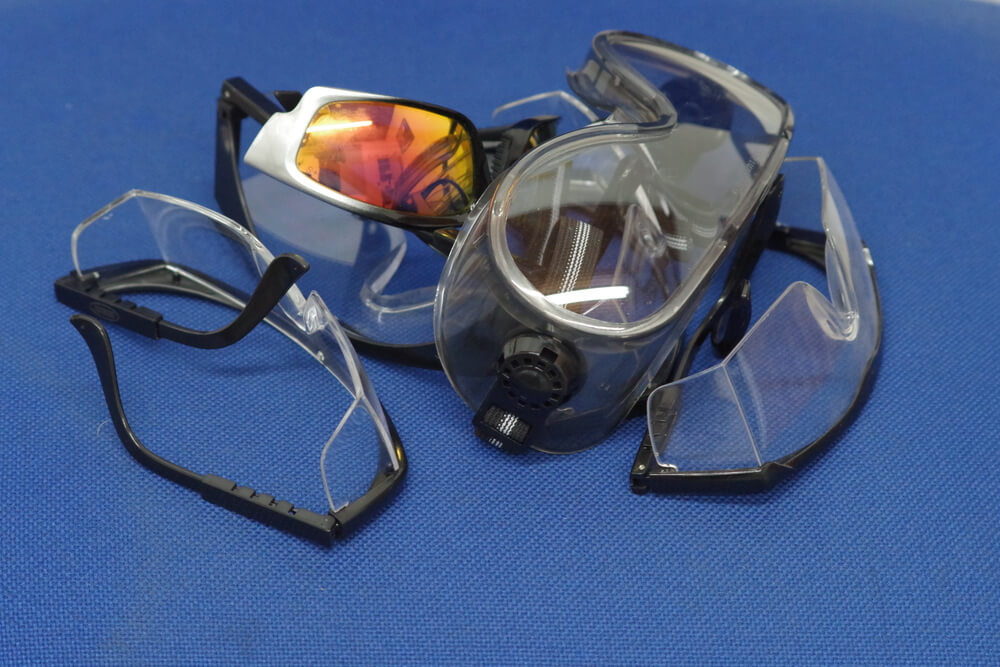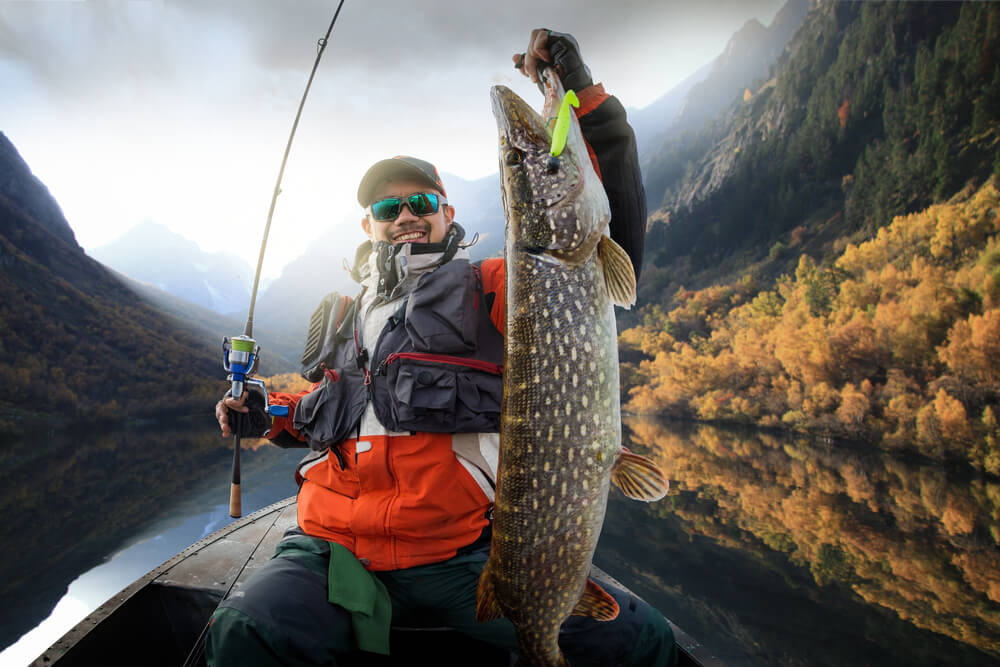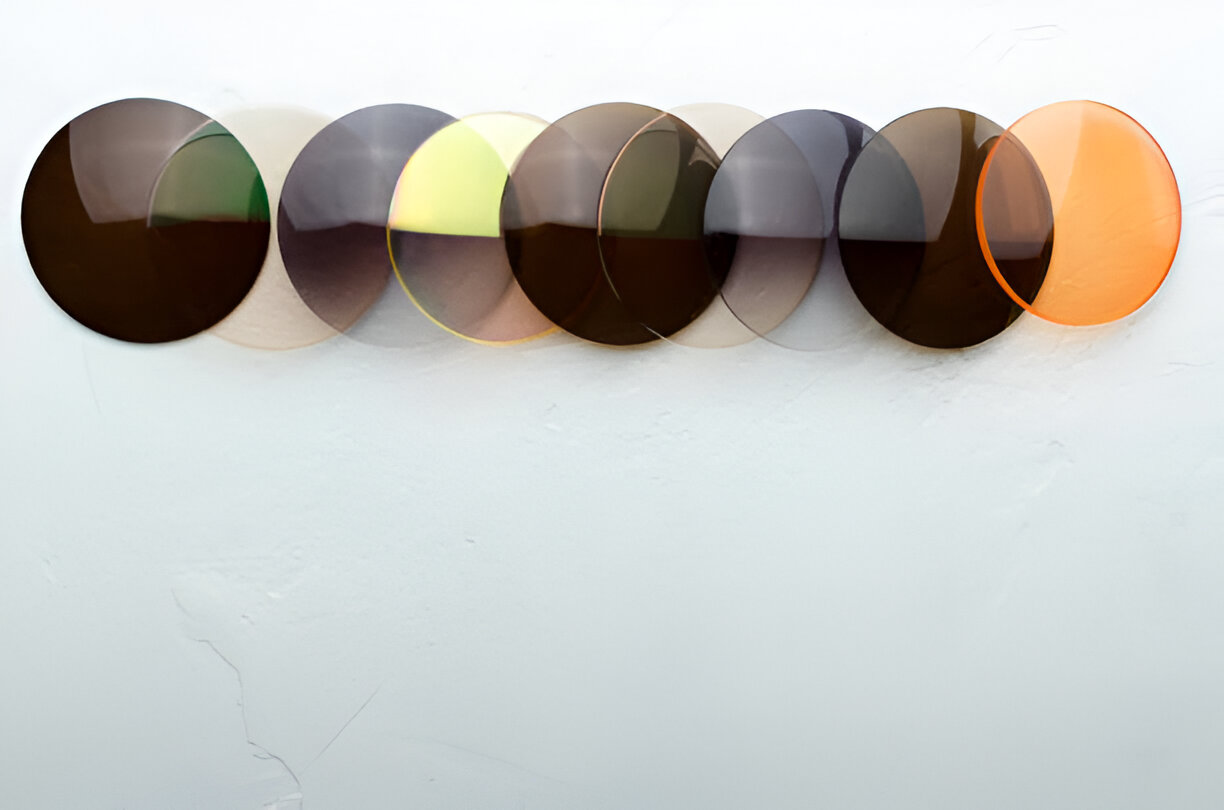
Blog
Eye Safety in Outdoor Work Environments: Tips and Recommendations
Nobody should take their eye health for granted, and this includes getting regular examinations from a nearby eye specialist for all of your eye care requirements. Eye care and safety go beyond simple trips to the eye doctor; it also includes taking the appropriate precautions to keep your eyes safe when participating in outdoor activities. Our eyes are our windows to the outside world, and we possess just one set of them.
Outdoor Activities and Eye Protection
As per the National Institute of Health (NIH), did you know that over 42,000 eye injuries connected to sports and recreation are reported annually in the United States? Thus, if you've ever worried if eye safety gear is necessary for sports and outdoor activities, the answer is definitely yes.
The positive aspect is that there are several options available for safety glasses. It's not a matter of having eye protection—from face protection to protective goggles and safety glasses—but rather wearing it. There are numerous potential threats to our eyes, including flying projectiles, equipment that resembles clubs being flung around, and, all those fingers competing close to or against each other.
The Most Common Activities That Need Safety Glasses
There are many hazards to your eyes in the world. The majority of individuals live their lives without thinking about the various compounds, flying particles, and random missiles that could endanger their eyes. Unless, certainly, you are employed in a profession where wearing eye protection is necessary to prevent very serious workplace injuries. You begin to view the world differently the moment you know that anything, even sawdust or bright lights, can cause blinding damage.
Most people avoid using eye protection during a variety of activities that they should.
People frequently have the best bifocal safety glasses on hand but decide not to wear them over their regular spectacles, so they occasionally skip them as they don't have any. Prescription safety eyewear can help with that. Whenever you engage in somewhat hazardous activities that call for the use of safety glasses, you may safeguard your eyes both at work or at home with an easily accessible pair of eye protection that lets you see clearly with no layering on eyewear.
Building and Renovation
You must wear eye protection when dealing with construction materials. It's a good idea to put on safety goggles or glasses even if you're merely hammering on furniture, only in case an errant nail, wood chip, or hammer end comes close to your eyes. Hearing an errant click on the safety glasses is far preferable to breaking both or any of your priceless eyes. It is especially crucial if you are attaching or cutting materials. It is clearly hazardous for sawdust or other composition trash to get in your eyes, and whatever is suspended, even immediately, and could fall all over, is a great motivation to wear protective eyewear and a safety helmet simultaneously.
Welding
The standard reasons why welding is so hazardous for the eyes are not the only ones. An extremely intense light that should never be seen with the unaided eye is produced when a prime point of heat is created. To avoid burned-out areas in your retinas, you need specially colored lenses, which are frequently included with eye protection or welding helmets. In addition, welding frequently releases airborne particles that are extremely hot and should be avoided. Welders typically wear gloves, baggy clothing, and protective goggles because of this.
Riding a Motorcycle
One of the riskiest pastimes for anyone to engage in is riding a motorcycle, thus equipping oneself with protective gear is essential to riding as securely as possible. The majority of motorcycle riders cover every part of their body with protective gear, including a helmet, safety glasses, bulky leather pants, boots, and jackets. Safety glasses with a motorcycle design are among the most widely available. Those who require vision correction and do not have access to prescription motorcycle glasses must wear full-face helmets with their glasses placed underneath.
Thorough Cleaning
Keep in mind how harmful chemicals may be to your eyes. That being said, just because you use clean sponges at home doesn't mean that this is no longer true. The fumes from cleaning solutions can also be a concern. Cleaning products are quite harmful to the eyes. When handling chemicals such as ammonia or bleach at home, practice extreme caution and don't forget to wear safety goggles when handling them. You should avoid getting chemicals near your eyes the more effective they are in cleaning. Use work safety glasses to keep these solutions safely out of your eyes for the exact reason that you keep them locked away from young children and pets.
Sanding and Grinding
Although the materials and results of sanding and grinding are fundamentally different, they are conceptually identical. However, the high friction caused by these actions can propel sharp, hot, and potentially deadly particles into the hair. Wearing eye protection is important when grinding since the blades shape the metal spinning against it. This can result in a shower of sparks. Sanding involves using a harsh tool, such as a power sander, to shape soft materials like wood. Even if you're sanding by hand, the sawdust can irritate you because it's grittier and less heated than the sparks.
Engaging in Projectile Sports
One of the main activity categories that ought to be connected with safety glasses but isn't often is sports. When practicing a few casual games of baseball or hitting the tennis court, most people don't put on protective eyewear. However, there is always a chance of eye injury when working in a projectile-filled environment. Consider getting a pair of cozy prescription safety glasses with a strap fastened for your watchful parents and wary players to wear throughout game time. It offers you a safe, impact-resistant set of prescription safety goggles to use on the field besides protecting your eyes during the game.
Yard Work
Even while it's typically less hazardous than sandblasting or welding, yard work still involves a surprising number of projectiles. Mother nature has a way of flinging sticks and leaves into the air, frequently straight into your face when you are pruning bushes, trimming shrubs, or even just mowing the grass with a power mower. When landscaping and performing yard work, wearing eye protection is a very helpful way to shield your face from falling debris, errant branches that snap back, and surprisingly bouncy twigs that jump away when chopped. Wearing safety eyewear is a great idea when chipping wood.
Sandblasting
The process of sandblasting involves projecting thousands of tiny sharp particles at an object to clean or smooth it. Before painting and fixing old cars, people use this process to remove old paint from buildings, rust from outdoor furniture, and anything else off of them. You don't want any of the particles—which can include tiny glass pellets, soft walnut shells, and real sand—to get in your eyes. Purchasing a set of prescription safety glasses online is an excellent idea if you wear glasses, as standard sandblasting operation necessitates eye protection. Particularly if you intend to blast sand for a while.
Considering the Lens Materials for Outdoor Activities
For best results, consider the lens material while choosing the ideal polarized lenses for your outdoor activities. A closer look at a few common lens materials and their advantages is provided below:
Polycarbonate: Polycarbonate lenses are a great option for high-impact sports like hiking, mountain biking, or skiing because of their impact resistance and featherweight design. Without compromising on optical clarity, these lenses provide exceptional protection and durability.
Trivex: This premium lens material combines the lightweight and impact resistance qualities of polycarbonate with the visual clarity of glass lenses. For individuals who want the ideal combination of both worlds, Trivex lenses offer unmatched performance for a wide range of outdoor activities.
Recognizing Lens Tints for Variations in Outdoor Environments
When engaging in outdoor activities, choosing the appropriate lens tint can have a big impact on how you see. To ensure the best possible contrast and clarity, different tints are designed for different light conditions and activities. Some of the popular lens tints are:
Gray: Perfect for bright, sunny days, gray lenses are a versatile tint that offers genuine color perception. Cycling, water sports, and general outdoor activities are all excellent uses for them.
Amber/Brown: In partly cloudy or overcast settings, these hues are excellent at boosting contrast and depth perception. Brown and Amber lenses improve visual sharpness and lessen eye strain, making them perfect for activities like hiking, fishing, and golf.
Yellow/Orange: These lenses provide exceptional clarity in low-light situations, such as fog or dense cloud cover. They come in very useful whether hunting, mountain biking, or skiing.
Choose the Ideal Frame Styles for Your Travels
To ensure ease and efficiency, choose a frame design that fits your needs and requirements of the outdoors. Take into account the following elements while choosing a frame:
Coverage: Full-wrap frames reduce peripheral glare and offer the highest level of eye protection, which makes them ideal for cycling, skiing, and aquatic activities like Wileyx safety glasses. Activities like hiking and fishing may be better suited for frame types that are more casual or semi-wrapped.
Fit and Comfort: Select a frame that will fit your face snugly without being uncomfortable. When engaging in vigorous activity, look for elements that can offer more grip and stability, such as rubber material temple tips and nose pads.
Frame Material: Polycarbonate or TR-90, two lightweight materials, can provide comfort without sacrificing strength. These materials are perfect for daily wear, high-impact sports, and extended outdoor activities.
Other Features to Support and Improve Performance
When choosing the ideal pair of safety sunglasses, there are a few more factors to take into account besides lens materials, hues, and frame styles. Among the notable choices are:
Hydrophobic Coatings: Designed for water activities, fishing, or off-road biking, safety glasses with hydrophobic lenses effectively repel water, dirt, and oil, guaranteeing good vision even in damp or dirty circumstances.
Photochromic Lenses: These lenses provide the best possible visual comfort in a variety of settings by automatically adjusting their tint according to the lighting. For people who regularly switch between different light settings when engaging in outdoor activities, these lenses are ideal.
Anti-reflective Coatings: These coatings can improve the comfort and clarity of vision even more by lowering reflections and glare on the rear surface of the lens. It is especially useful for activities that involve water or snow.
The Most Widely Used Ratings For Eye Protection
ANSI Z87.1
The American National Standards Institute (ANSI) developed the Z87.1 standard to evaluate the impact resistance and safety of eyeglasses. Construction sites, labs, and industrial settings are common places to find eyewear with an ANSI Z87.1 rating. According to this standard, there are two primary categories for eyewear:
Z87.1
Standard Impact: Safety eyewear bearing this grade offers rudimentary defense against high-speed impacts, like flying debris or particles. The material used to make these lenses is usually polycarbonate, which is renowned for its strength and resilience to impact.
Z87.1+
High Impact: This certification means that the safety glasses provide even more safety from impacts at high speeds, which qualifies them for more dangerous situations. Stronger, thicker lenses are a common component of high-impact eyewear, which increases safety.
Safety Recommendations for Protecting Your Eyes Outdoors
- Always wear sunglasses or goggles: Even on cloudy days, make it a practice to wear eye protection when participating in outdoor activities.
- Select wraparound fashions: Wraparound-framed Armourx safety glasses or sunglasses provide superior coverage and defense against blowing sand, wind, and side glare.
- Wear safety glasses for high-risk activities: To prevent impact injuries, sports like racquetball or cycling require specific eye protection.
- Use sunscreen surrounding the eyes because the sensitive skin around them is still susceptible to UV rays. For extra sun protection, it's crucial to wear a hat with a broad visor and use sunscreen made especially for the face.
- Keep yourself hydrated: Drinking enough water helps avoid dry eyes, particularly in dry or windy environments.
- Take regular breaks from computer screens: To lessen visual fatigue and digital tiredness, take regular breaks from outside activities involving electronic devices.
Finally, remember to maintain your protective glasses. Frequently wash them under a running stream of water while using a mild liquid soap. Additionally, to preserve their efficacy, store them appropriately. If they get scratched or broken, replace them right away because damaged eyewear might not offer enough protection.
Final Words
Buying prescription safety glasses online from SEG for the outdoors requires careful consideration of several factors, including lens materials, shades, frame designs, and extra upgrades. With this information at your disposal, you can make a smart decision that meets your particular needs and enhances your outdoor experience while guaranteeing the best possible eye protection.
Explore our wide selection of premium safety glasses made for a variety of activities to embrace your outdoor experiences in style and confidence. Discover the ideal pair of glasses to go with your outdoor activities and enjoy unmatched safety and comfort for your eyes along the way.







Leave your comment